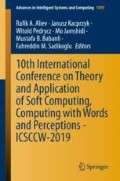Abstract
This study aimed at time-space estimations of monthly precipitation via a two-stage modeling framework. In temporal modeling as the first stage, three different AI models were applied to observed precipitation data from seven stations located in the Turkish Republic of Northern Cyprus (TRNC). In this way two scenarios were examined, each employing a specific inputs set. Afterwards, the outputs of single AI models were used to generate ensemble techniques to improve the performance of the precipitation predictions by the single AI models. To end this aim, two linear and one nonlinear ensemble techniques were proposed and then, the obtained outcomes were compared. In the second stage, for estimation of the spatial distribution of precipitation over whole region, the results of temporal modeling were used as inputs for the IDW spatial interpolator. The cross-validation was finally applied to evaluate the overall accuracy of the proposed hybrid spatiotemporal modeling approach. The obtained results in temporal modeling stage demonstrated that the non-linear ensemble method revealed higher prediction efficiency.
Access this chapter
Tax calculation will be finalised at checkout
Purchases are for personal use only
References
Nourani, V., Uzelaltinbulat, S., Sadikoglu, F., Behfar, N.: Artificial intelligence based ensemble modeling for multi-station prediction of precipitation. Atmosphere 10(2), 80 (2019)
Nourani, V., Ejlali, R.G., Alami, M.T.: Spatiotemporal groundwater level forecasting in coastal aquifers by hybrid artificial neural network-geostatistics model: a case study. Environ. Eng. Sci. 28(3), 217–228 (2010)
Guhathakurta, P.: Long lead monsoon rainfall prediction for meteorological sub-divisions of India using deterministic artificial neural network model. Meteorol. Atmos. Phys. 101(2), 93–108 (2008)
Hung, N.Q., Babel, M.S., Weesakul, S., Tripathi, N.K.: An artificial neural network model for rainfall forecasting in Bangkok, Thailand. Hydrol. Earth Syst. Sci. 13, 1413–1425 (2009)
Devi, S.R., Arulmozhivarman, P., Venkatesh, C.: ANN based rainfall prediction - a tool for developing a landslide early warning system. In: Advancing Culture of Living with Landslides-Workshop on World Landslide Forum, pp. 175–182 (2017)
Nourani, V., Andalib, G.: Daily and monthly suspended sediment load predictions using wavelet-based AI approaches. J. Mountain Sci. 12(1), 85–100 (2015)
Lu, G.Y., Wong, D.W.: An adaptive inverse-distance weighting spatial interpolation technique. Comput. Geosci. 34(9), 1044–1055 (2008)
Kisi, O., Cimen, M.: Precipitation forecasting by using wavelet-support vector machine conjunction model. Eng. Appl. Artif. Intell. 25(4), 783–792 (2012)
Akrami, S.A., Nourani, V., Hakim, S.J.S.: Development of nonlinear model based on wavelet-ANFIS for rainfall forecasting at Klang Gates Dam. Water Resour. Manag. 28(10), 2999–3018 (2014)
Yamashkin, S., Radovanovic, M., Yamashkin, A., Vukovic, D.: Using ensemble systems to study natural processes. J. Hydroinformatics 20(4), 753–765 (2018)
Bates, J.M., Granger, C.W.J.: The combination of forecasts. Oper. Res. Q. 20, 451–468 (1969)
Makridakis, S., Andersen, A., Carbone, R., Fildes, R., Hibon, M., Lewandowski, R., Winkler, R.: The accuracy of extrapolation (time series) methods: results of a forecasting competition. J. Forecasting 1(2), 111–153 (1982)
Sharghi, E., Nourani, V., Behfar, N.: Earthfill dam seepage analysis using ensemble artificial intelligence based modeling. J. Hydroinformatics 20(5), 1071–1084 (2018)
Caruso, C., Quarta, F.: Interpolation methods comparison. Comput. Math Appl. 35(12), 109–126 (1998)
Sharifi, S.S., Delirhasannia, R., Nourani, V., Sadraddini, A.A., Ghorbani, A.: Using ANNs and ANFIS for modeling and sensitivity analysis of effective rainfall. In: Recent Advances in Continuum Mechanics, Hydrology and Ecology, pp. 133–139 (2013)
Kasiviswanathan, K.S., Cibin, R., Sudheer, K.P., Chaubey, I.: Constructing prediction interval for artificial neural network rainfall runoff models based on ensemble simulations. J. Hydrol. 499, 275–288 (2013)
Author information
Authors and Affiliations
Corresponding author
Editor information
Editors and Affiliations
Rights and permissions
Copyright information
© 2020 Springer Nature Switzerland AG
About this paper
Cite this paper
Uzelaltinbulat, S., Nourani, V., Sadikoglu, F., Behfar, N. (2020). Spatiotemporal Precipitation Modeling by AI Based Ensemble Approach. In: Aliev, R., Kacprzyk, J., Pedrycz, W., Jamshidi, M., Babanli, M., Sadikoglu, F. (eds) 10th International Conference on Theory and Application of Soft Computing, Computing with Words and Perceptions - ICSCCW-2019. ICSCCW 2019. Advances in Intelligent Systems and Computing, vol 1095. Springer, Cham. https://doi.org/10.1007/978-3-030-35249-3_16
Download citation
DOI: https://doi.org/10.1007/978-3-030-35249-3_16
Published:
Publisher Name: Springer, Cham
Print ISBN: 978-3-030-35248-6
Online ISBN: 978-3-030-35249-3
eBook Packages: Intelligent Technologies and RoboticsIntelligent Technologies and Robotics (R0)

